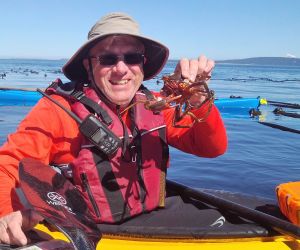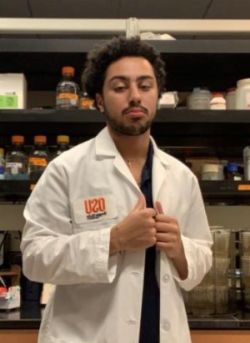
In March 2020, during week 10 of the winter term and shortly after faculty and staff began moving into the newly constructed George W. Peavy Forest Science Center, the COVID-19 outbreak was declared a global pandemic. COVID-19 completely changed the landscape of higher education, and as the pandemic continued to spread and the remainder of 2020 shifted alongside it, the College of Forestry quickly adapted to support students.
“During this challenging time, staff and faculty adapted quickly, working to provide ideas, courses and programs that met students where they were at with real solutions to complete research and support their progress towards their academic goals,” said Tom DeLuca, the Cheryl Ramberg-Ford and Allyn C. Ford Dean of the College of Forestry.
When stay-at-home and social distancing orders came down from the governor’s office in March, Ethan Harris, a senior in forest engineering, had to change course to complete his senior capstone project. Instead of surveying a stand on Starker Forests lands in the Oregon Coast range to appraise its value, develop a harvest plan and coordinate with mills and truckers, he had to cancel his survey work and timber cruises and coordinate team project meetings virtually through Zoom. Woodam Chung, Stewart Professor of Forest Operations, helped Harris find available data and complete the project.
Another senior, Wade Christensen, had a similar experience for his capstone project. Help arrived in the form of remotely sensed LIDAR data from a leading expert in the field, Bogdan Strimbu, assistant professor in forest biometrics and geomatics. Allowing for differences between direct observation and point clouds, Christensen estimated timber volumes and completed his work.
Both Harris and Christensen graduated on time, but they are examples of the stressful scramble brought on by pandemic restrictions last spring. Adjusting capstone projects, jumping into remote classes, recalibrating internships, filling gaps in students’ resources — all fell to faculty, advisors and support staff.
For Nicole Kent, manager of advising & academic relations for the College of Forestry, the shift became all-consuming. She and her team make sure that the college’s nearly 1,000 undergraduates get the courses and experiences they need. They also conduct student orientations and other events.
Only about half of those students are on the Corvallis campus. Others work at OSU Cascades in Bend, at Eastern Oregon University in La Grande or through Ecampus. “We were already doing a lot of remote teaching. That gave the college a head start in adjusting to the pandemic,” Kent said.
Most students in Corvallis are there because they want to learn in person — in the forest, on field trips, in labs, face to face. With COVID restrictions in place, students saw internships and other work-experience opportunities evaporate. Some courses were cancelled and others shifted to the computer screen.
Nevertheless, the College of Forestry prides itself on producing work-ready graduates, so advisors and faculty shifted gears to find alternatives. They determined what courses would provide the required learning outcomes and kept students on the path to graduation.
“I can’t say enough about how wonderful the Student Services team is and how hard they have worked,” Kent said. “They were all at home working remotely. They stepped up to show such great care and compassion for our students.”
Those efforts included finding financial help when income had suddenly dried up. The OSU Foundation led an effort that saw over 3,000 donors contribute over $1 million for Beavers Care, an initiative to make a difference for OSU students, faculty and staff in urgent need of emergency support. College staff navigated the federal CARES Act to determine who was eligible for assistance and who was not. Staff also identified additional university resources to help fill gaps in their personal lives, such as access to groceries and medications.
Even laboratory-based classes, which usually take place in person, transformed to adapt to remote delivery. Wood science and engineering professor Lech Muszynski successfully adapted his renewable materials laboratory class. The class utilized a combination of online lectures, team assignments, video clips with recorded lab routines and procedures, discussions and publicly available web content. Elements of Muszynski’s innovative class strategies were shared with the OSU campus community as part of a best practice webinar series.
Staff in the college’s IT office also made extraordinary efforts to ensure all students had access to computers and the internet at home. During the same weeks the college was moving into the new Peavy Forest Science Center building, IT was assisting students with Zoom meeting software, loaner computers and off-campus access to computer labs.
Throughout the year, OSU and the college communicated with students, sending updates about available resources and helping people who were struggling with isolation.
“As this crisis unfolded and continues to unfold, we believe it is more critical than ever to support each other,” DeLuca said. “Our first priority is the safety and well-being of our community and we will continue to do everything we can to support academic success and the College of Forestry community.”
This story was part of the College of Forestry’s 2019-2020 Biennial Report.










